Handcrafted DIY Decor: Making Clay Pots
Creating your own clay pots is not just a fun activity; it's a fantastic way to bring a touch of personal flair to your home decor. Imagine walking into your living room and being greeted by a stunning array of handcrafted pots, each telling a unique story of creativity and craftsmanship. Whether you're a seasoned artist or a curious beginner, the art of pottery offers endless possibilities for expression. In this article, we will delve into the exciting world of DIY clay pot making, exploring everything from choosing the right materials to decorating your finished pieces. So, roll up your sleeves, grab some clay, and let’s get started on this artistic journey!
When embarking on your pottery adventure, the first step is to select the right type of clay. Not all clays are created equal, and each variety has its own unique properties that can influence your project. For instance, earthenware is great for beginners due to its affordability and ease of use, while stoneware is more durable and ideal for functional pieces. If you're looking for something special, consider porcelain, known for its delicate beauty and translucence. Understanding the differences can help you make an informed choice that aligns with your creative vision. Here’s a quick comparison of popular clay types:
| Clay Type | Characteristics | Best For |
|---|---|---|
| Earthenware | Soft, porous, easy to shape | Beginners, decorative items |
| Stoneware | Durable, non-porous, great for functional ware | Dinnerware, pots |
| Porcelain | Fine, smooth, translucent | Delicate art pieces, high-end decor |
Having the right tools can dramatically enhance your pottery experience. Think of your tools as the brush to a painter or the chisel to a sculptor; they are essential for bringing your vision to life. From basic to advanced, the tools you choose can make all the difference. Let’s break it down:
As a beginner, you don’t need a full workshop to get started. A few basic tools will set you on the right path. You’ll want to have:
- Rolling Pin: For flattening your clay.
- Cutting Wire: Perfect for slicing through clay.
- Shaping Tools: For refining edges and creating designs.
These tools will help you get comfortable with the material and start crafting beautiful pieces.
Once you’ve mastered the basics, it’s time to explore advanced equipment that can take your pottery skills to the next level. A pottery wheel can allow you to create perfectly symmetrical pots, while specialized carving tools can help you add intricate designs. Investing in these tools can be a game-changer, opening up a world of possibilities for your creations.
Just like any craftsman, maintaining your tools is key to ensuring they last. Clean your tools after every use, store them in a dry place, and check for any wear and tear regularly. A little care goes a long way in preserving your investment!
Now that you have your tools, it’s time to dive into some basic pottery techniques. Mastering these methods is essential for creating beautiful pieces. Start with:
- Hand-Building: This technique allows you to create pots using your hands without a wheel.
- Coiling: Roll out long ropes of clay and stack them to form pots.
- Slab Construction: Cut flat pieces of clay and assemble them into a pot shape.
These techniques are not only fun but also foundational for your pottery journey.
Once your pots are formed, the real fun begins—decorating! This is where you can unleash your creativity and make each piece truly unique. Think of your pot as a blank canvas waiting for your artistic touch. Whether you prefer bold colors or subtle textures, there are countless ways to personalize your clay pots.
Painting and glazing can transform your pots from simple to stunning. Use vibrant paints for a playful look or opt for glazes that enhance the natural beauty of the clay. Remember to follow the manufacturer’s instructions for application and drying times to achieve the best results.
Incorporating natural elements like leaves, flowers, or even stones can add a beautiful organic touch to your pots. Pressing these materials into the clay before firing can create stunning textures and designs that celebrate nature’s beauty. It’s like bringing a piece of the outdoors inside!
1. Can I use regular clay for indoor plants?
Yes, but make sure to use a clay that is suitable for the intended use, such as stoneware, which is durable and non-porous.
2. How do I prevent my clay pots from cracking?
Ensure that your clay is properly wedged to remove air bubbles, and dry your pots slowly to avoid rapid changes in temperature.
3. What is the best way to decorate my clay pots?
You can paint, glaze, or use natural elements. Experiment with different techniques to find what resonates with your style!

Choosing the Right Clay
When it comes to crafting your own clay pots, one of the most important decisions you'll make is choosing the right type of clay. Just like choosing the right paint for a masterpiece, the type of clay you select can significantly affect the outcome of your project. There are several varieties of clay, each with its own unique properties, advantages, and challenges. Understanding these differences can help you create stunning pieces that reflect your personal style.
First off, let's dive into the most common types of clay you'll encounter:
- Earthenware: This type of clay is often favored for its workability and vibrant colors. It's great for beginners because it's easy to shape and can be fired at low temperatures. However, earthenware is porous, which means it needs to be glazed to hold liquids.
- Stoneware: Known for its durability, stoneware is a fantastic choice if you're looking for pots that can withstand the test of time. It’s fired at higher temperatures, making it less porous and suitable for functional items like planters.
- Porcelain: If you're aiming for a more refined and delicate look, porcelain is your go-to clay. It's smooth and can be shaped into intricate designs, but it requires a higher level of skill and is more challenging to work with due to its sensitivity during firing.
Before you make your selection, consider the purpose of your clay pots. Are they purely decorative, or will they be used for planting? This question will guide your choice of clay. For instance, if you're making pots for outdoor plants, stoneware might be your best option due to its sturdiness and ability to retain moisture.
Another factor to keep in mind is the firing temperature. Different clays require different firing temperatures, which can affect your kiln choice and the overall process. Here’s a quick comparison of firing temperatures for the types of clay mentioned above:
| Type of Clay | Firing Temperature (°F) |
|---|---|
| Earthenware | 1,830 - 2,050 |
| Stoneware | 2,190 - 2,400 |
| Porcelain | 2,300 - 2,600 |
Ultimately, the right clay for your project is one that aligns with your artistic vision and practical needs. Don't be afraid to experiment with different types to find what works best for you. The beauty of DIY decor is that it allows for personal expression, and choosing the right materials is a big part of that journey. So, roll up your sleeves, grab some clay, and let your creativity flow!
Q: Can I mix different types of clay?
A: Yes, you can mix clays, but be cautious as they may have different firing temperatures and shrink rates, which can lead to cracking.
Q: What if I want to make functional pots?
A: For functional pots, consider using stoneware or earthenware with proper glazing to ensure they are waterproof and durable.
Q: How do I know if my clay is dry enough to fire?
A: A good rule of thumb is to wait until your clay feels bone dry and is lighter in color. You can also gently press it; if it feels firm and doesn't leave an imprint, it's ready for firing.
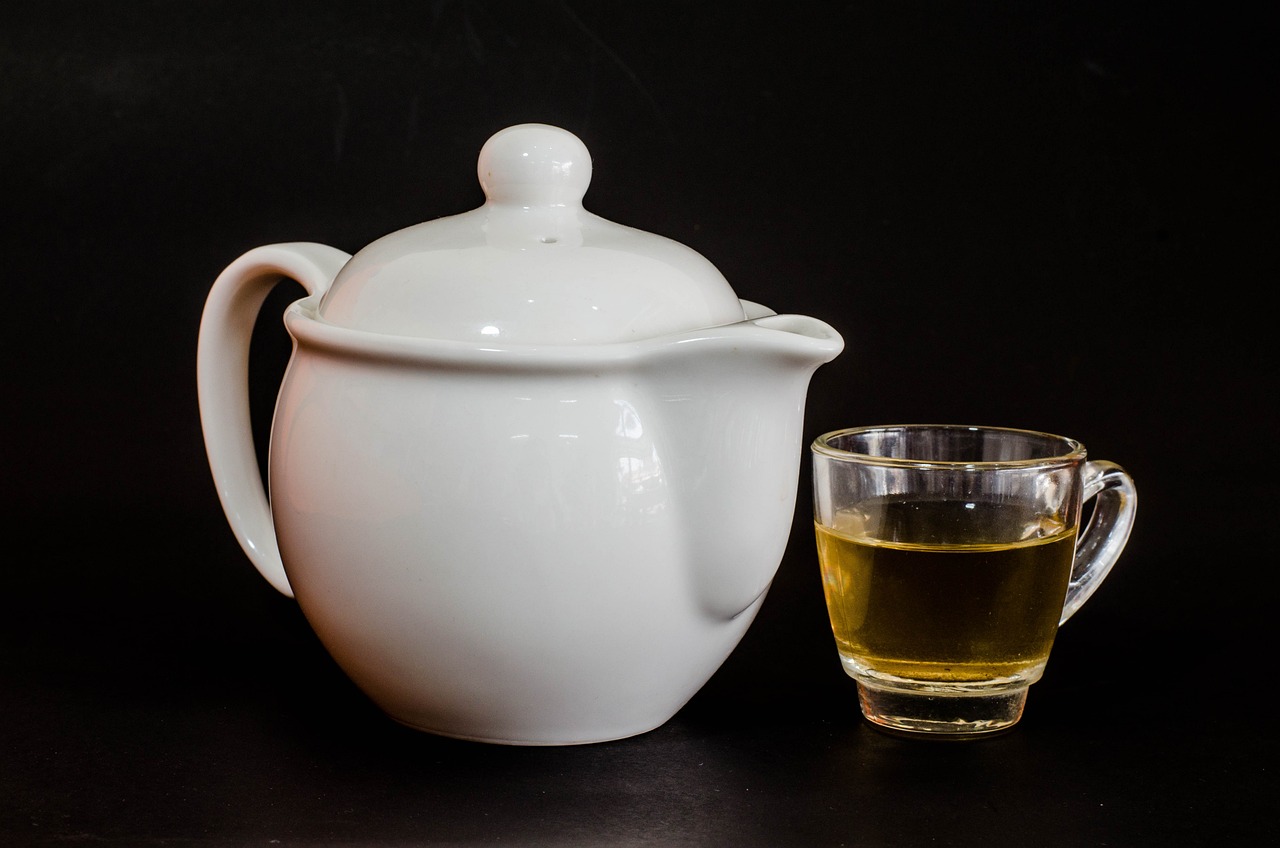
Essential Tools for Pottery
This article explores the art of creating beautiful clay pots through DIY methods. Discover techniques, tips, and inspiration to enhance your home decor with unique handcrafted pieces.
Selecting the appropriate type of clay is crucial for successful pot-making. Explore different clay varieties and their properties to find the best fit for your project.
Having the right tools can significantly impact your pottery experience. Whether you're a novice or a seasoned potter, understanding the essential tools is vital for crafting stunning clay pots. The world of pottery is both exciting and intricate, and with the right equipment, you can unleash your creativity and bring your visions to life.
At the core of every potter's toolkit are a few basic yet essential items. These tools not only help in shaping and molding your clay but also assist in achieving the desired finish. Here’s a closer look at some fundamental tools you should consider:
- Rolling Pin: This tool is essential for flattening your clay to create even slabs. Think of it as your trusty companion that helps you lay the groundwork for your masterpieces.
- Cutting Wire: A simple yet effective tool used for slicing through clay. It’s like a knife for your dough, making it easier to cut and shape without damaging your work.
- Shaping Tools: These come in various forms, from wooden paddles to metal ribs, and are used to refine the shape of your pots. They allow you to add intricate details and curves that truly enhance your designs.
Once you've got the basics down, you might be tempted to dive into more advanced pottery equipment. This is where the fun really begins! Imagine the thrill of working with a pottery wheel, which can transform a lump of clay into a beautifully symmetrical pot in mere minutes. Not only does it allow for precision, but it also opens up a world of creative possibilities. Specialized carving tools can also take your work to the next level, allowing you to add intricate designs that make your pots stand out.
After mastering the basic tools, consider investing in advanced equipment. A pottery wheel, for example, is a game-changer for anyone serious about crafting pots. It allows for uniform shapes and can significantly speed up the process. Additionally, specialized carving tools can help you create stunning textures and detailed patterns that make your pieces truly unique. These tools can include:
- Pottery Wheel: Essential for throwing pots, it helps achieve uniform shapes.
- Carving Tools: Used for adding intricate designs and textures.
Proper maintenance of your pottery tools ensures longevity and performance. Just like any craftsman, you need to care for your tools to keep them in top condition. Here are a few tips to keep your tools in great shape:
- Clean your tools after each use to prevent clay buildup.
- Store tools in a dry place to avoid rust and deterioration.
- Regularly check for any damage and replace worn-out tools as needed.
By taking care of your tools, you not only extend their life but also enhance your pottery experience. Remember, a well-maintained tool is like a well-tuned instrument; it performs better and helps you create with ease.
Mastering basic pottery techniques is key to creating beautiful pieces. This section introduces essential methods like hand-building, coiling, and slab construction.
Once your pots are formed, it's time to get creative with decoration. Explore various techniques to personalize your clay pots and make them truly unique.
Painting and glazing can add vibrant colors and finishes to your pots. Discover different types of paints and glazes, along with tips for application and drying.
Incorporating natural elements like leaves and flowers can enhance your pot's aesthetic. Learn how to use these materials for stunning textures and designs in your clay pots.
Q: What type of clay is best for beginners?
A: Earthenware is often recommended for beginners due to its workability and lower firing temperatures.
Q: Can I use regular paint on my clay pots?
A: It's best to use paints specifically designed for ceramics to ensure durability and safety.
Q: How do I know when my clay is dry enough to fire?
A: The clay should feel dry to the touch and should not feel cool when you hold it; this indicates it's ready for firing.
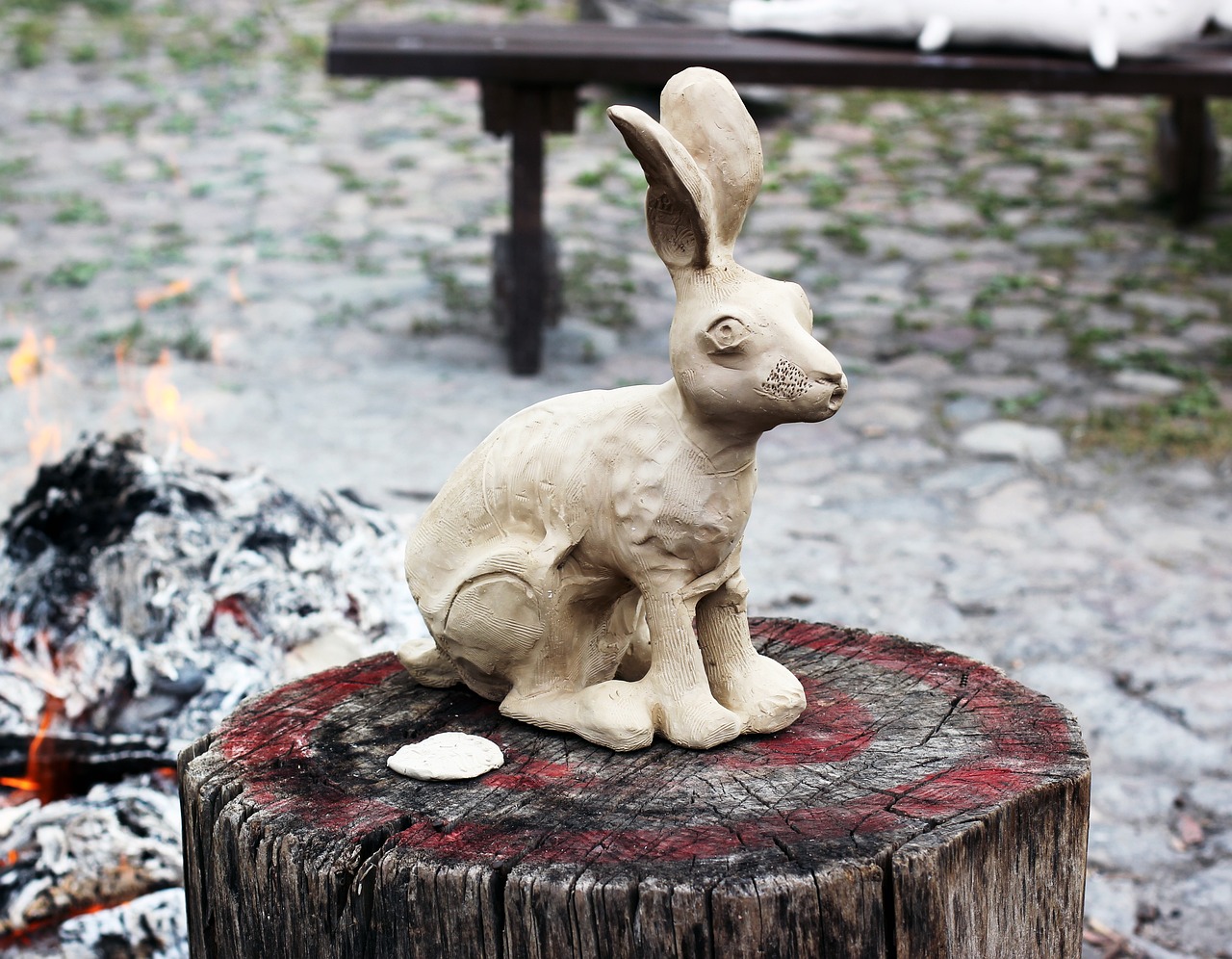
Basic Pottery Tools
When diving into the world of pottery, having the right tools is like having a well-stocked toolbox for any DIY project. It can make or break your experience, especially if you're just starting out. So, what are the you should have on hand? Let's explore the essentials that will help you mold and shape your creative vision into reality.
First and foremost, a good rolling pin is indispensable. Think of it as your trusty sidekick; it helps flatten your clay into even slabs, making it easier to work with. Whether you're creating a simple dish or a complex sculpture, a rolling pin ensures your clay has the right thickness. Pair it with a cutting wire, which is perfect for slicing through blocks of clay with precision. This tool is crucial for trimming and shaping, allowing you to create clean edges and smooth surfaces.
Next, let's talk about shaping tools. These come in various forms, from simple wooden paddles to more advanced metal scrapers. Each tool serves a unique purpose. For instance, a rib tool can help you smooth out the surface of your pots, while a pin tool is fantastic for adding intricate details. You can also consider investing in a set of loop tools, which are ideal for carving and hollowing out your pieces. The versatility of these tools allows you to explore your creativity without limitations.
Another essential tool is your hands! Yes, the most basic and yet the most effective tools are your fingers. Hand-building techniques rely on the dexterity and sensitivity of your hands to shape the clay into beautiful forms. However, to protect your hands and ensure a better grip, you might want to use pottery gloves, especially when working with wet clay.
As you gain confidence, you may want to explore more advanced tools, but starting with these basics will lay a solid foundation for your pottery journey. To summarize, here’s a quick look at the basic pottery tools you should consider:
| Tool | Purpose |
|---|---|
| Rolling Pin | Flattens clay into even slabs |
| Cutting Wire | Slices through blocks of clay |
| Shaping Tools | Helps in smoothing and detailing |
| Loop Tools | Carves and hollows out clay pieces |
| Pottery Gloves | Protects hands while shaping clay |
In summary, starting with these basic pottery tools will not only enhance your experience but also empower you to create stunning clay pots that reflect your unique style. Remember, every potter's journey is different, so feel free to adapt and expand your toolkit as you grow in your craft!
- What is the best type of clay for beginners? - For beginners, earthenware clay is often recommended because it is easy to work with and fires at lower temperatures.
- Do I need a pottery wheel to get started? - No, many beginners start with hand-building techniques that do not require a wheel.
- How do I clean my pottery tools? - Clean your tools with water and a sponge after every use to prevent clay from hardening on them.
- Can I use regular paint on my clay pots? - It's best to use paints and glazes specifically designed for ceramics to ensure durability and safety.
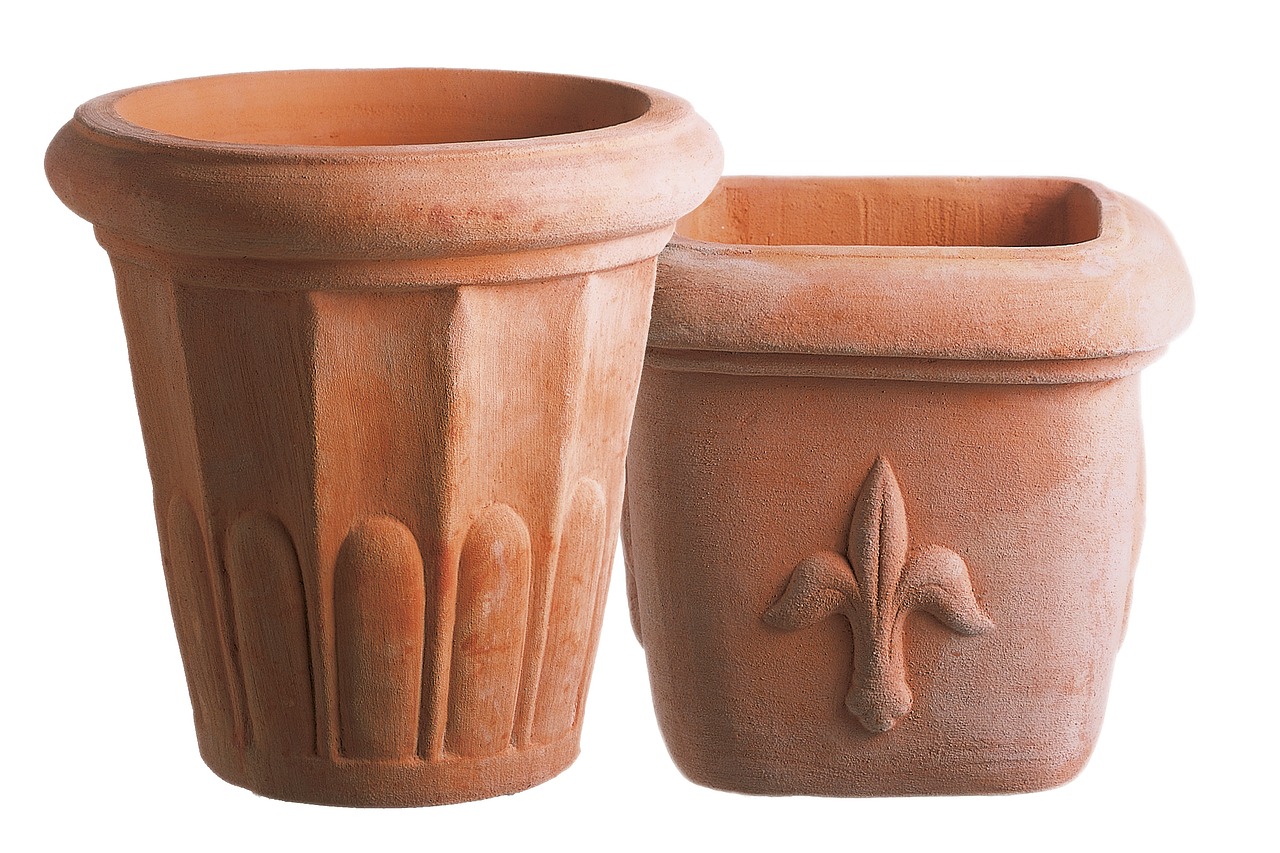
Advanced Pottery Equipment
Once you've mastered the basics of pottery, it's time to elevate your skills with . This phase of your pottery journey can be incredibly exciting, as it opens up a whole new world of possibilities for creating intricate designs and more refined pieces. Think of it like upgrading from a bicycle to a motorcycle; both can get you places, but the latter offers speed and versatility that can take your craft to the next level.
One of the most significant investments you can make is in a pottery wheel. This tool allows for greater control over shaping your clay, enabling you to create symmetrical pieces with ease. It’s like having a dance partner that knows all the right moves—once you get the hang of it, you'll be spinning out beautiful pots in no time. When choosing a pottery wheel, consider factors such as size, weight, and whether you prefer an electric or manual model. Electric wheels can save time and effort, while manual ones can give you a more hands-on experience.
In addition to a pottery wheel, consider investing in specialized carving tools. These tools are essential for adding intricate designs and textures to your pots. They come in various shapes and sizes, allowing you to create everything from delicate floral patterns to bold geometric designs. Think of these tools as your paintbrushes; just as an artist uses different brushes to achieve various effects, potters use carving tools to bring their vision to life.
Another valuable piece of equipment is the kiln. While you may not need one immediately, having access to a kiln is crucial for firing your pieces to harden and set the clay. A kiln can be a significant investment, so consider joining a local pottery studio or community center that has one. This way, you can still fire your creations without the upfront costs. Imagine trying to bake a cake without an oven; that’s what it’s like trying to finish a pottery piece without a kiln!
Finally, don't overlook the importance of safety gear. Advanced pottery can involve materials and processes that require protective measures. Invest in a good pair of gloves, a mask for dust protection, and safety goggles to protect your eyes from flying debris. Just like a chef wouldn’t step into the kitchen without an apron and a good knife, you shouldn’t dive into advanced pottery without the proper safety equipment.
In summary, advancing your pottery skills requires not just creativity but also the right tools. By investing in a pottery wheel, specialized carving tools, and ensuring you have access to a kiln, you'll be well on your way to creating stunning pieces that showcase your unique style and talent. Remember, the journey of pottery is not just about the end product but also about enjoying the process of creating something beautiful with your own hands.
- What is the best type of pottery wheel for beginners? A good beginner pottery wheel should be sturdy, easy to operate, and affordable. Look for models that are lightweight and portable.
- How do I choose the right kiln for my pottery? Consider the size of the pieces you plan to create and whether you need an electric or gas kiln. Electric kilns are generally easier for beginners.
- What safety equipment do I need for pottery? Essential safety gear includes gloves, a dust mask, and safety goggles to protect against clay dust and sharp tools.
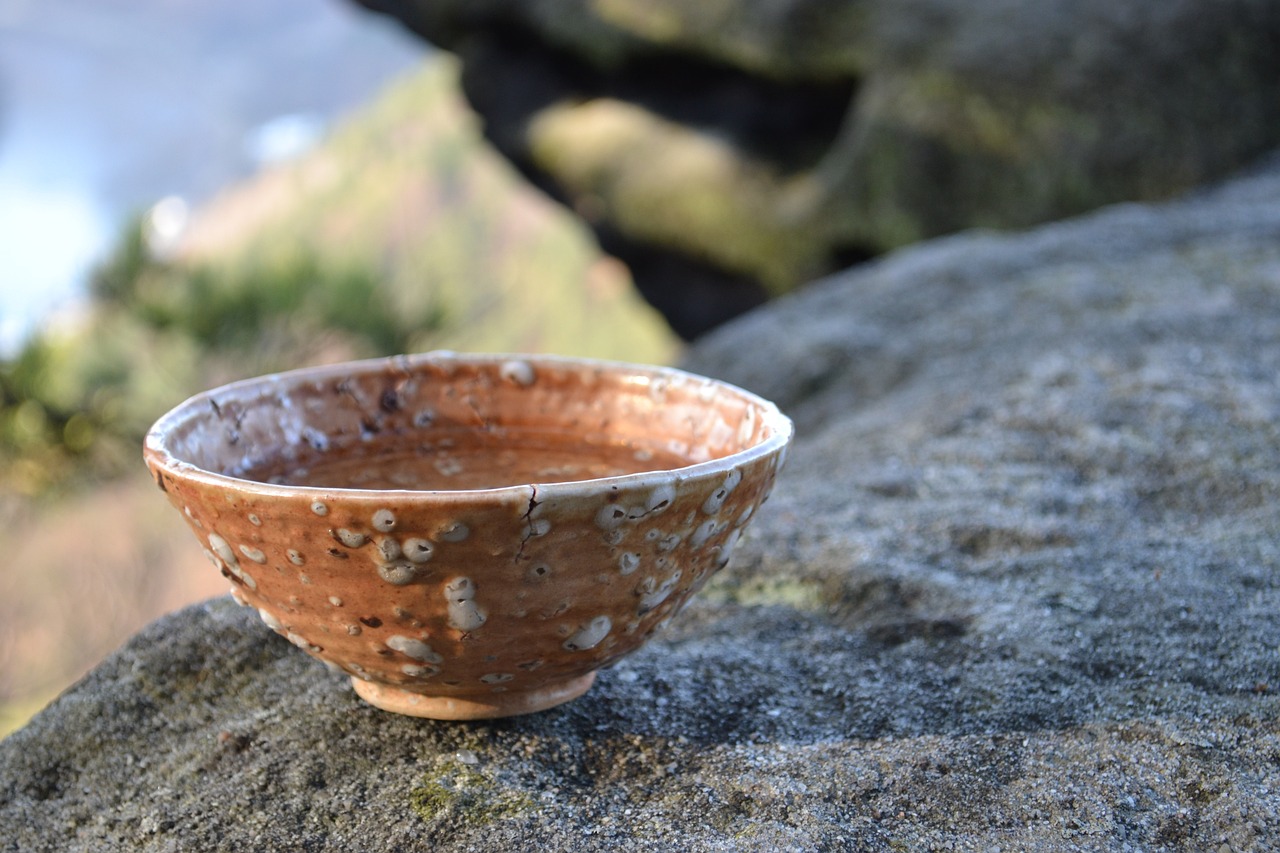
Tool Maintenance Tips
This article explores the art of creating beautiful clay pots through DIY methods. Discover techniques, tips, and inspiration to enhance your home decor with unique handcrafted pieces.
Selecting the appropriate type of clay is crucial for successful pot-making. Explore different clay varieties and their properties to find the best fit for your project.
Having the right tools can significantly impact your pottery experience. Learn about the essential tools you need to create stunning clay pots, from basic to advanced equipment.
Start with the fundamental tools that every potter should have. This section covers items like rolling pins, cutting wires, and shaping tools essential for beginners.
Once you've mastered the basics, explore advanced tools that can elevate your pottery skills. Discover items like pottery wheels and specialized carving tools for intricate designs.
Proper maintenance of your pottery tools ensures longevity and performance. Just like a chef wouldn’t use dull knives, a potter must keep their tools in top shape to create stunning pieces. Here are some essential tips to keep your tools functioning optimally:
- Cleaning: After each use, make sure to clean your tools thoroughly. Clay can dry and harden on your tools, making them difficult to use later. A simple rinse with water and a soft brush can do wonders!
- Drying: Always dry your tools completely before storing them. This prevents rust and other damage, especially for metal tools.
- Storage: Store your tools in a dry, cool place. Consider using a toolbox or a dedicated pottery drawer to keep them organized and protected from dust and damage.
- Inspection: Regularly check your tools for wear and tear. If you notice any damage, such as bent wires or chipped handles, it’s best to replace them to avoid compromising your work.
By following these maintenance tips, you can ensure that your tools remain effective and reliable for all your pottery projects. Remember, taking a little time to care for your tools can save you a lot of hassle in the long run!
Mastering basic pottery techniques is key to creating beautiful pieces. This section introduces essential methods like hand-building, coiling, and slab construction.
Once your pots are formed, it's time to get creative with decoration. Explore various techniques to personalize your clay pots and make them truly unique.
Painting and glazing can add vibrant colors and finishes to your pots. Discover different types of paints and glazes, along with tips for application and drying.
Incorporating natural elements like leaves and flowers can enhance your pot's aesthetic. Learn how to use these materials for stunning textures and designs in your clay pots.
Q: What type of clay is best for beginners?
A: Earthenware clay is often recommended for beginners due to its ease of use and forgiving nature.
Q: How long does it take for clay to dry?
A: Drying times can vary, but generally, it takes about 24-48 hours for clay to dry completely, depending on thickness and humidity.
Q: Can I use regular paint on my clay pots?
A: While you can use acrylic paint, it’s best to use paints specifically designed for ceramics to ensure durability and adherence.
Q: Do I need a kiln to fire my clay pots?
A: Yes, firing in a kiln is necessary for most types of clay to achieve durability. However, air-dry clay can be used for projects that don’t require firing.
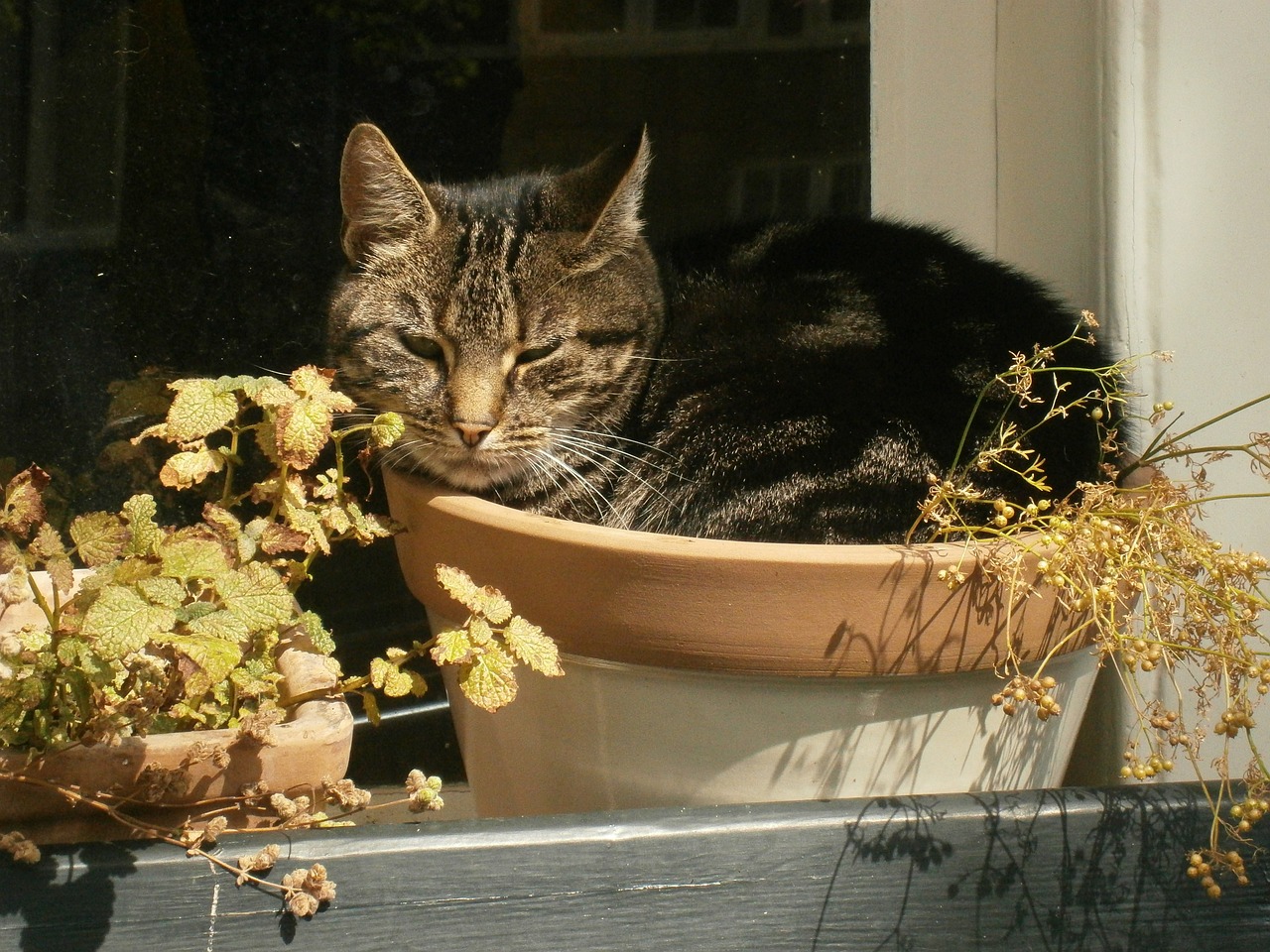
Pottery Techniques for Beginners
When it comes to pottery, the journey begins with mastering a few essential techniques that lay the foundation for your creative endeavors. Think of these techniques as the building blocks of your pottery skills. Each method offers a unique approach to shaping and forming clay, allowing you to express your artistic vision. Whether you’re looking to create a simple planter or an intricate decorative piece, understanding these fundamental techniques is crucial.
The first technique that every beginner should explore is hand-building. This method involves shaping the clay using your hands and simple tools, rather than a pottery wheel. It’s incredibly liberating, as it allows for a more tactile connection with the material. You can create various forms, from bowls to sculptures, by pinching, rolling, or molding the clay. Hand-building is not just about the end product; it’s also a wonderful way to engage with the creative process itself.
Another popular technique is coiling. This method involves rolling out long, thin strips of clay and stacking them to build up the walls of your pot. Imagine building a tower with clay ropes; it’s both fun and effective! Coiling allows for great flexibility in design, enabling you to create everything from simple pots to more complex shapes. Plus, the texture of the coils can add a rustic charm to your finished piece.
Then, there’s the slab construction technique. This involves rolling out flat pieces of clay (the slabs) and joining them together to form a three-dimensional object. Think of it as crafting with clay sheets, similar to building with cardboard. Slab construction is fantastic for making boxes, tiles, and even intricate wall hangings. The possibilities are endless, and it encourages creativity in both form and function.
To give you a clearer picture of these techniques, here’s a quick table summarizing their characteristics:
| Technique | Description | Best For |
|---|---|---|
| Hand-Building | Shaping clay with hands and simple tools. | Bowls, sculptures, and freeform pieces. |
| Coiling | Rolling strips of clay and stacking them. | Pots and textured designs. |
| Slab Construction | Using flat pieces of clay to create forms. | Boxes, tiles, and wall art. |
As you dive into these techniques, remember that practice is key. Don’t be afraid to experiment and make mistakes; each imperfection is an opportunity to learn and grow as a potter. Additionally, consider joining a local pottery class or community workshop. This not only provides hands-on experience but also connects you with fellow enthusiasts who can offer tips and inspiration.
Finally, let’s not forget about the importance of patience. Pottery is as much about the process as it is about the final product. So, take your time, enjoy the journey, and let your creativity flow. You’ll be amazed at what you can create with just a bit of clay and a whole lot of imagination!
- What type of clay is best for beginners? Earthenware is often recommended for beginners due to its workability and lower firing temperature.
- Do I need a pottery wheel to start? No, many beginners start with hand-building techniques before moving on to wheel throwing.
- How long does it take for clay to dry? This can vary, but typically, it takes 24-48 hours for clay to dry enough to be fired.
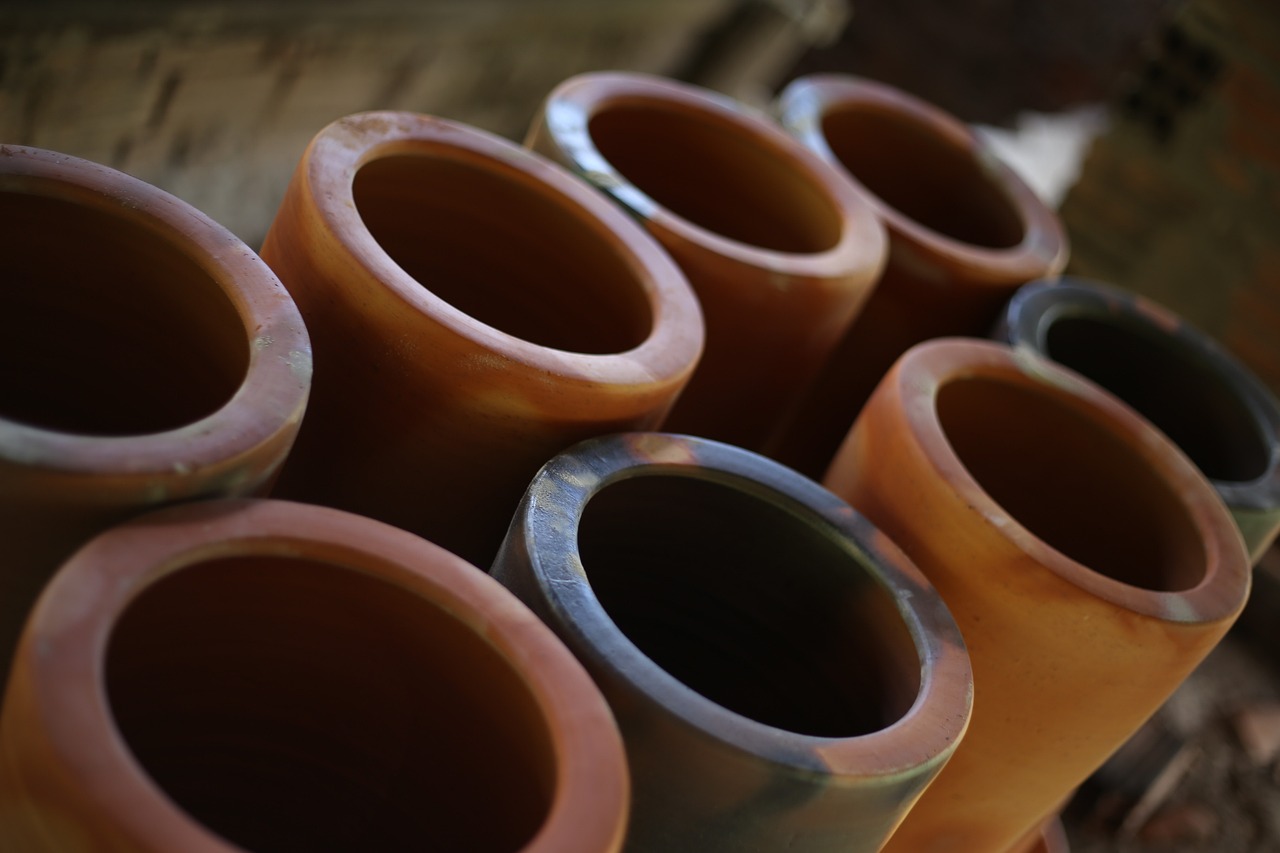
Decorating Your Clay Pots
Once you've shaped your clay pots, the real fun begins—decorating them! This is where you can truly express your creativity and personality. Think of your clay pots as blank canvases waiting for your artistic touch. Whether you want to create a rustic look or go for a more modern vibe, there are countless ways to personalize your pots. Let's dive into some exciting techniques that will transform your clay creations into stunning pieces of art!
One popular method for decorating your clay pots is painting and glazing. This technique not only adds vibrant colors but also provides a protective layer to your pots. You can choose from a variety of paints, including acrylics, underglazes, and specialty pottery glazes. Each type offers unique finishes and effects. For instance, acrylic paint is great for bright colors, while glazes can give a glossy, professional look. When applying paint or glaze, make sure to follow the manufacturer's instructions regarding drying times and application methods to achieve the best results.
Another fantastic way to enhance your pots is by incorporating natural elements. Imagine adding leaves, flowers, or even twigs to your designs! Not only do these materials bring a touch of nature into your home, but they also create stunning textures and patterns. For example, you can press leaves into the wet clay to create intricate imprints, or use flowers to create a beautiful collage. The beauty of using natural elements is that they are often free and can be found in your own backyard. Just remember to seal your pots properly if you use organic materials to prevent decay.
To give you a clearer idea of how to approach decorating your clay pots, here’s a quick comparison of different painting and glazing options:
| Type | Best For | Finish | Durability |
|---|---|---|---|
| Acrylic Paint | Bright colors, detailed designs | Matte to glossy | Moderate (not waterproof) |
| Underglaze | Detailed designs before glazing | Matte (after firing) | High (after firing) |
| Pottery Glaze | Professional finish, waterproofing | Glossy, satin, or matte | Very high (after firing) |
Finally, don’t shy away from experimenting with mixed media. You can combine painting, glazing, and natural elements to create truly unique pieces. For instance, after painting your pot, consider adding a layer of natural twine around the rim or affixing small stones to the surface for a three-dimensional effect. The possibilities are endless, and the only limit is your imagination!
- What type of paint is best for clay pots? Acrylic paint is popular for its vibrant colors and easy application, but pottery glazes offer a more durable finish after firing.
- Can I use regular paint on clay pots? While you can use regular paint, it’s best to use paints specifically designed for pottery to ensure durability and adherence.
- How do I seal my decorated pots? If you used natural elements or non-waterproof paints, consider applying a clear sealant to protect your design from moisture.
- Are there any safety concerns with using certain paints? Yes, always check if the paint is non-toxic, especially if you plan to use your pots for food or plants.

Painting and Glazing
Once you've shaped your clay pots, the fun really begins! are the perfect ways to add your personal touch and transform a simple clay pot into a stunning piece of art. Imagine your pots bursting with color, each telling a story of creativity and passion. But before you dive in with your paintbrush or glazing tools, let’s explore some essential tips and techniques that can elevate your pottery game.
First off, understanding the difference between painting and glazing is crucial. Painting involves applying color directly onto the surface of the clay, while glazing is a glass-like coating that not only adds color but also makes your pots waterproof and more durable. You can think of painting as dressing your pot in a beautiful outfit, while glazing is like sealing that outfit with a protective layer. Both methods have their unique charm, and combining them can yield spectacular results!
When it comes to painting your clay pots, the options are virtually limitless. You can use acrylic paints, which are easy to work with and dry quickly, or you might prefer using underglazes specifically designed for pottery. Underglazes allow for more intricate designs and can withstand the heat of the kiln, making them a favorite among serious potters. Here’s a quick look at some popular paint types:
| Type of Paint | Best For | Notes |
|---|---|---|
| Acrylic Paint | Surface decoration | Fast-drying; not waterproof unless sealed |
| Underglaze | Detailed designs | Can be fired in the kiln; waterproof |
| Glaze | Final finish | Provides a glossy, waterproof surface |
Before you start painting, ensure your pots are completely dry and free from dust. A clean surface will help the paint adhere better and result in a more vibrant finish. You can use a soft cloth to wipe them down. Once you’re ready, consider sketching your designs lightly with a pencil. This way, you can plan your artwork without the pressure of making permanent marks right away.
After applying your paint, let it dry thoroughly. If you’re using acrylics, this usually takes about an hour. For underglazes, follow the manufacturer’s instructions regarding drying times. Once dry, it’s time to add a glaze if you choose to do so. Applying glaze can be a bit tricky, but with practice, you'll get the hang of it. Just remember to coat evenly to avoid drips and uneven surfaces!
Now, let’s talk about using natural elements in your designs. Incorporating leaves, flowers, or even twigs can create stunning textures and patterns on your pots. You can press these elements into the clay before firing or use them as stencils when painting. The key is to let your imagination run wild! Nature provides endless inspiration, and using natural materials can give your pots a unique and organic feel.
In conclusion, painting and glazing your clay pots is not just about aesthetics; it’s a way to express your personality and creativity. Whether you opt for bold, bright colors or subtle, earthy tones, your handcrafted pieces will surely stand out in any home decor. So grab your paintbrushes, unleash your creativity, and let your pots reflect your unique style!
- What type of paint is best for clay pots? Acrylic paint is great for beginners, while underglazes are ideal for detailed designs that will be fired in the kiln.
- Can I use regular paint on clay pots? Yes, but regular paint may not be waterproof unless sealed. It's best to use paints specifically designed for pottery.
- How do I make my painted pots waterproof? You can apply a clear sealant over the painted surface to protect it from water damage.

Using Natural Elements
When it comes to decorating your handcrafted clay pots, can elevate your creations to a whole new level. Imagine the rustic charm of a pot adorned with leaves, flowers, or even twigs, creating an organic feel that brings the beauty of nature indoors. Not only do these elements add texture and color, but they also tell a story, connecting your art to the world outside.
One of the simplest ways to incorporate natural elements is by embedding them into the clay while it’s still wet. For instance, you can press leaves or flower petals into the surface of your pot, leaving behind beautiful imprints that serve as unique designs. This technique not only enhances the visual appeal but also creates a tactile experience for anyone who touches the pot. It's like bringing a piece of the garden into your home!
Another fantastic method is to use dried flowers or herbs. These can be glued onto the surface of your pot after it has been fired and glazed. Consider using herbs like rosemary or lavender for a fragrant touch, or vibrant dried flowers for a pop of color. The key is to choose elements that resonate with your personal style and the overall aesthetic you wish to achieve.
Here’s a quick guide on how to effectively use natural elements in your clay pots:
- Choose Wisely: Select leaves, flowers, or herbs that complement the color and style of your pot.
- Preparation: If using fresh elements, ensure they are clean and free from pests. Dried elements should be stored properly to maintain their color and integrity.
- Application: For embedding, press the natural elements firmly into the wet clay. For gluing, use a strong adhesive suitable for ceramics.
- Finishing Touch: After applying, consider a clear glaze to protect the natural elements and enhance their colors.
Moreover, you can explore the idea of creating a themed pot by using elements that reflect a particular season. For example, in autumn, you might use acorns and dried leaves, while in spring, fresh flowers and vibrant green leaves can bring a lively touch. This seasonal approach not only keeps your decor fresh but also allows you to express your creativity in various ways throughout the year.
Don't forget to experiment! The beauty of DIY decor lies in its versatility. Try combining different natural elements to see what works best for you. The process of discovery can be incredibly rewarding, and you may find that some of your most beautiful creations come from unexpected combinations. Remember, there’s no right or wrong when it comes to art – just let your imagination run wild!
Q: Can I use fresh flowers on my clay pots?
A: Yes, you can use fresh flowers, but it's best to apply them after the pot has been fired and glazed to avoid damage. You can use a strong adhesive to attach them securely.
Q: How do I preserve the natural elements on my pots?
A: To preserve natural elements, consider using a clear glaze over them after they are applied. This will protect them from moisture and fading.
Q: What types of natural elements work best?
A: Leaves, dried flowers, twigs, and herbs are all great options. Choose elements that resonate with your style and the theme of your decor.
Q: Can I use painted elements with natural elements?
A: Absolutely! Combining painted elements with natural ones can create a stunning contrast and enhance the overall design of your clay pot.
Frequently Asked Questions
- What type of clay is best for beginners?
For beginners, earthenware clay is an excellent choice. It is easy to work with, forgiving, and fires at lower temperatures, making it perfect for those just starting their pottery journey.
- Do I need a pottery wheel to make clay pots?
No, you don't need a pottery wheel to create beautiful pots! Hand-building techniques like coiling and slab construction allow you to craft unique pieces without any advanced equipment.
- How do I maintain my pottery tools?
To keep your tools in top shape, clean them after each use and store them in a dry place. Regularly check for any signs of wear and tear, and consider using tool oil to prevent rust on metal parts.
- Can I paint my clay pots after they are fired?
Absolutely! Once your pots are fired and cooled, you can use acrylic paints or glazes to add color. Just remember to seal your painted pots with a clear coat to protect them from moisture.
- What natural elements can I use to decorate my pots?
You can incorporate a variety of natural elements such as leaves, flowers, and twigs. These can be pressed into the clay before firing to create stunning textures and designs that highlight the beauty of nature.
- Is it safe to use my clay pots for food?
It depends on the type of clay and glaze used. If you want to make food-safe pottery, ensure you use food-safe glazes and clays specifically designed for culinary use. Always check the manufacturer's recommendations.
- How long does it take for clay pots to dry before firing?
Typically, clay pots should dry for at least 24 to 48 hours before firing. However, the drying time can vary based on the thickness of your piece and the humidity in your environment. Always ensure that the pot is completely dry to avoid cracking in the kiln.



















